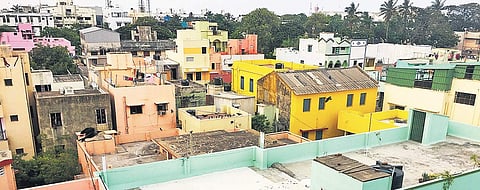

A blazing sun forces people to drink more fluids, cover their heads or shade their eyes to stay hydrated and cool. Solar energy is composed of the unseen ultraviolet rays (5%), the visible colours in the VIBGYOR spectrum (43%), and infrared (52%), that cannot be seen but are felt as heat. Vardah, the December 2016 cyclone, blew away more than 1 lakh trees in Chennai which is nearly a quarter of her natural cover.
The sharp sunlight on roads and pavements combined with the early onset of a heat wave in mid-April has woken up many to the realities of climate change. For instance, the Great Barrier Reef off Australia is now bleaching for the second consecutive year. Prolonged heat stress from rising ocean temperatures is turning their resplendent colours stark white!
Between 1991 and 2008, meteorologists reported a rise of 1.5 to 2°C in cities. Heat radiated during the day by asphalt and concrete is trapped by buildings as they have high heat retention capacities. This increases physical discomfort and contributes to the formation of surface and atmospheric urban
heat islands.
Congested urban communities generally reflect less and absorb more of the sun’s heat energy than sparse rural communities. To restrain heat buildup, roofs and external walls are insulated with materials that are resistant to heat conduction. The stored heat is gradually exchanged with the environment after sunset till equilibrium is reached.
The temperature difference between buildings and outside ambient can be as high as 12°C in the evenings! If terraces surfaces are treated with high albedo paints, it will higher thermal emittance values. As these coated slabs release heat more readily, spaces below them stay cooler.
Urban geometry refers to the dimensions and spacing of buildings. If setbacks are blocked by other structures, buildings cannot easily lose internal heat. Air conditioning and other processes that use energy, generate heat in urban settings, termed as anthropogenic heat.
Buildings are therefore mandated to provide a minimum of 25% of floor area as window openings for natural ventilation and lighting.
Urban studies have shown that an increase in tree cover by 50%, and a decrease in the width of streets by 10% for green landscapes, lowers ambient temperature by 4 to 8°C! The evaporation from trees maintains a cooler street canyon. Simply put, incorporating more trees, green roofs, and vegetation reduces heat island effects by shading buildings, deflecting solar radiation, and releasing moisture into
the atmosphere.
The heat island effect drives people to use air conditioners more. This raises electricity needs with consequent increase in air pollution, greenhouse gas emissions and heat-related illnesses. Although climatologists have been studying heat islands for decades, community interest and concern regarding them has been more recent. It is possible to affect the microclimate of the community or neighbourhood by just increasing green canopies.
While open spaces in cities are scarce, even a small grass patch along compound walls or hardy shrubs in a vacant lot next door can provide relief. So go ahead, nurture native trees and chill; whoever said it is easy to save the planet?!